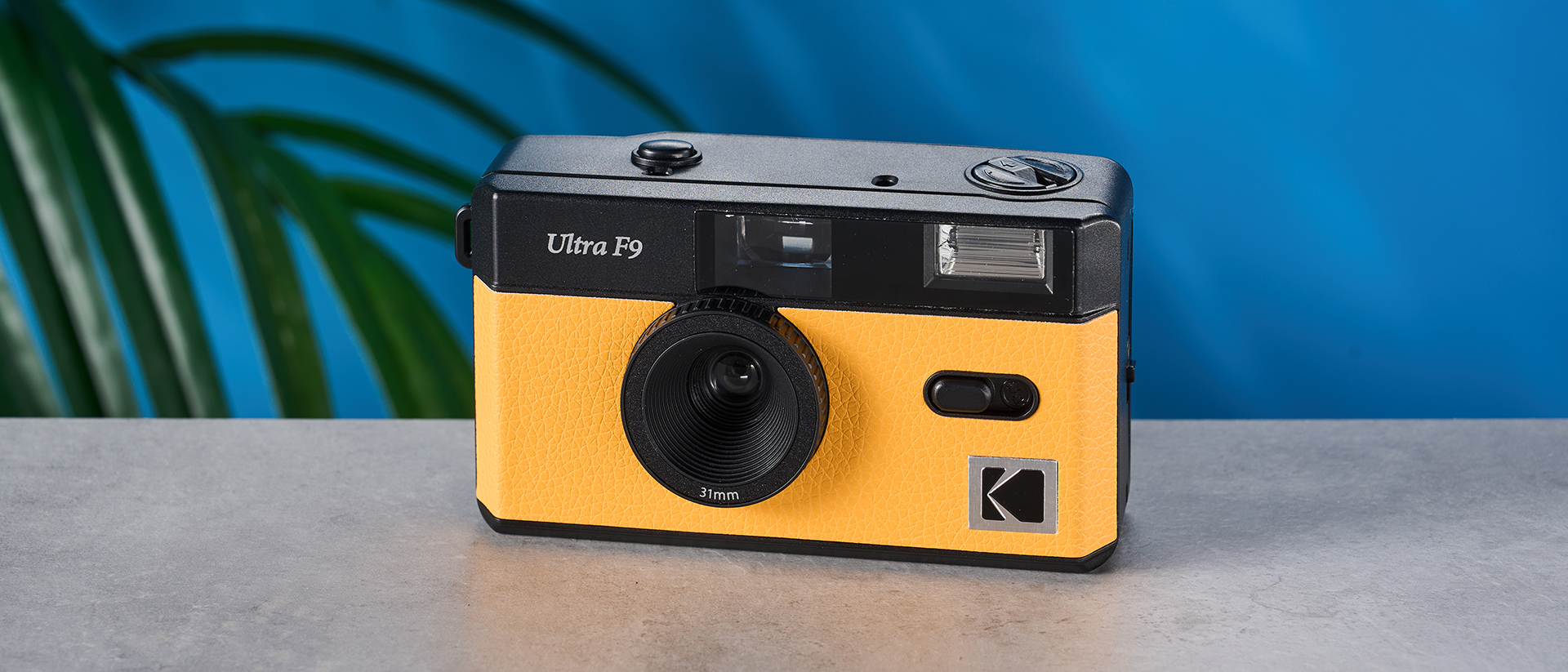Tom's Guide Verdict
Film photography fans, look no further than the Kodak Ultra F9 35mm. This reusable film camera takes lovely, retro images in bright conditions, and its ease of use and portability make it a winner. At just $49, it’s very cheap, and film costs aren’t high either. But it has a small viewfinder and low-light performance is restricted by the fixed f/9 aperture lens.
Pros
- +
Very cheap
- +
Great retro photos in bright conditions
- +
Extremely easy to use
- +
Lightweight and compact
Cons
- -
Subpar low-light performance
- -
Small viewfinder
- -
Some chromatic aberration in photos
Why you can trust Tom's Guide
These days, my social media feed is populated with 35mm photos taken on the likes of the Kodak Ultra F9, and nearly all of my friends own either a disposable or a reusable film camera. The resurgence of film photography has seen film cameras come back into frame, and I got the chance to test the Ultra F9. My verdict? I’ll be holding on to it for a long time as it’s one of the best cheap cameras around.
The Ultra F9 is a 35mm film format camera that’s extremely easy to use and affordable. Not only is the camera itself inexpensive, costing just $49, but so is 35mm film. The camera’s ease of use makes it foolproof so it can be used by anyone, and its lightweight and compact body make it great to travel with. However, it comes with a few quirks.
For the complete breakdown, read my full Kodak Ultra F9 35mm review.
Kodak Ultra F9 35mm review: Specs
| Specs | Kodak Ultra F9 35mm |
|---|---|
| Price | $49 / £39 |
| Lens | 31mm fixed-focus |
| Viewfinder | Yes |
| Exposure control | Automatic |
| Shutter | 1/120s |
| Aperture | f/9 |
| ISO | 200 / 400 |
| Shooting range | 1m-∞ |
| Flash | Built-in |
| Self-timer | No |
| Power | 1 x AAA battery |
| Dimensions | 4.6 x 2.6 x 1.7 inches |
| Weight | 5.99oz (camera only) |
| Film format | 35mm |
| Film development cost | $20 / £17 approx. |
Kodak Ultra F9 35mm review: Cheat sheet
- What is it? A reusable film camera that uses the 35mm film format
- Who is it for? For beginners and fans of film photography
- How much does it cost? The Kodak Ultra F9 35mm is available for $49 / £39
- What do we like? The camera is very cheap, photos turn out great, and the camera is very portable and easy to use
- What don’t we like? Low-light performance is subpar, the viewfinder is very small, and there is some chromatic aberration
Kodak Ultra F9 35mm review: Price & availability
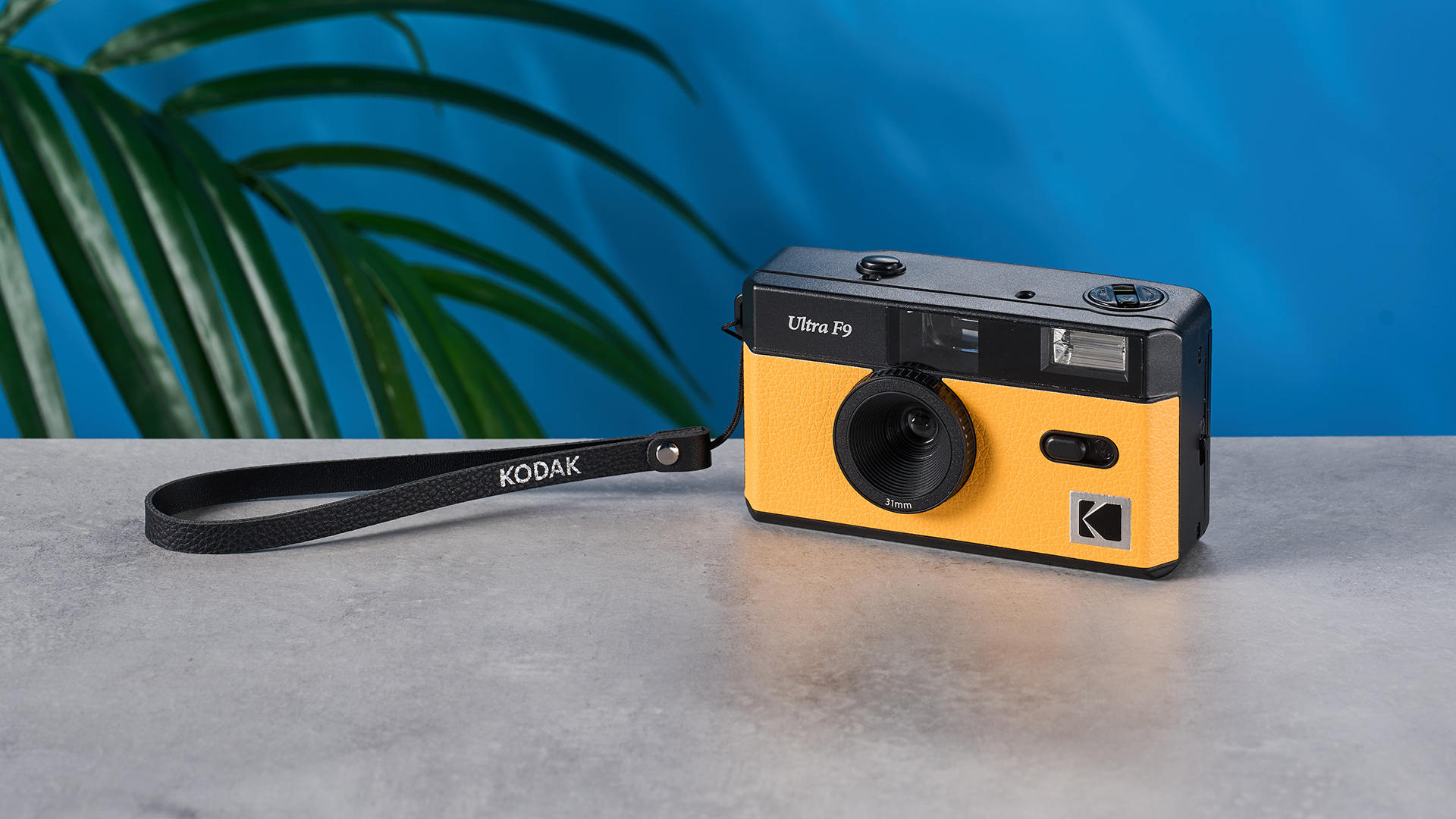
The Kodak Ultra F9 35mm is available for $49 at Amazon U.S. / £39 at Amazon U.K., and its low price makes film photography very accessible. It comes in two colorways, black and yellow or green and white.
The Ultra F9 35mm is priced similarly to other film cameras, like the AgfaPhoto Analogue 35mm ($44), and it’s great value for money as it’s reusable and offers great image quality.
Kodak Ultra F9 35mm review: Design & build quality
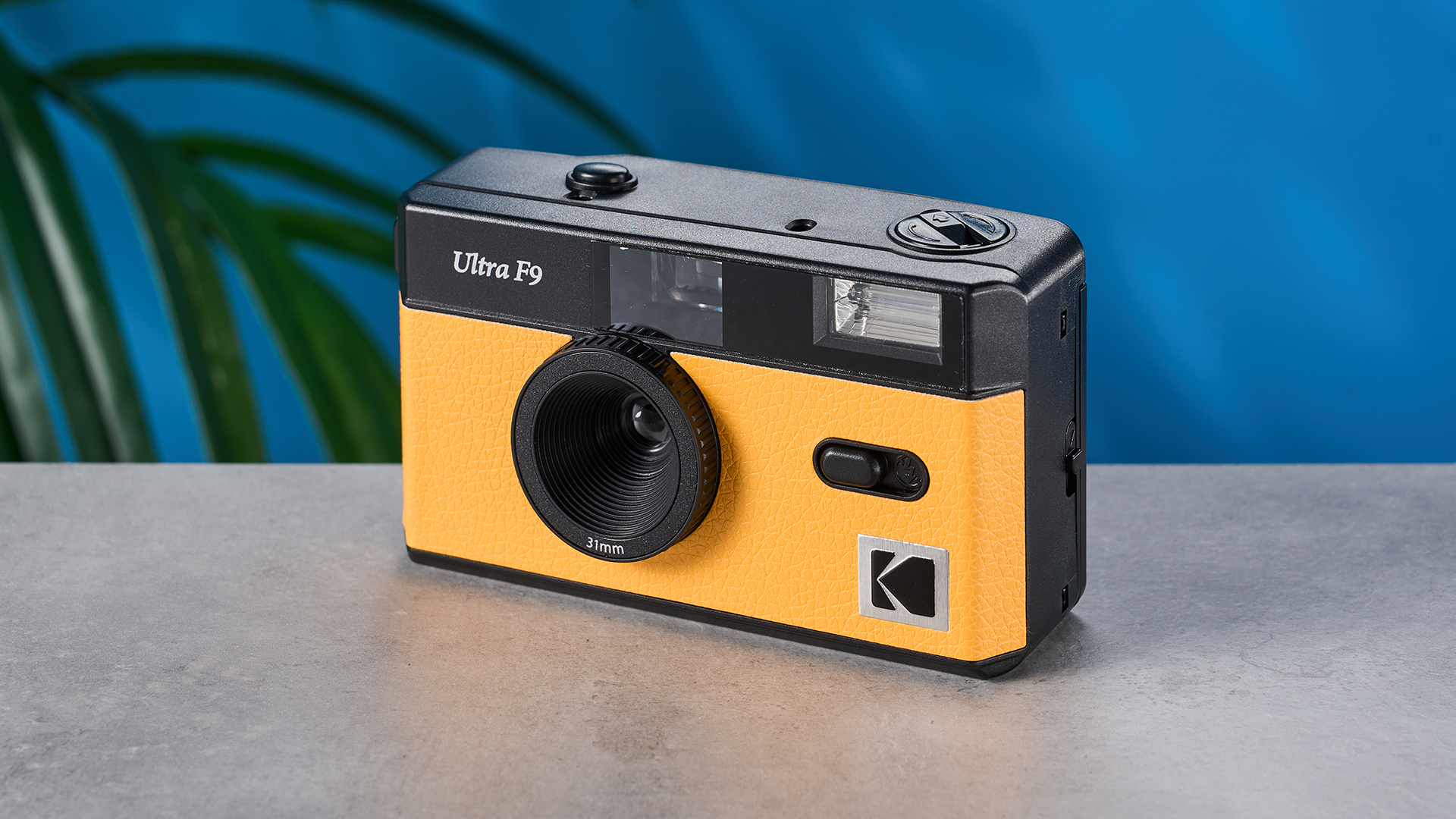
The Kodak Ultra F9 35mm is very compact, measuring just 4.6 x 2.6 x 1.7 inches, and it’s very comfortable to hold with either one or both hands. I was able to easily carry it in my coat’s pocket without feeling weighed down too, as it weighs 5.99oz (camera only).
As I mentioned earlier, it comes in two colorways. I tested the yellow and black model which looks great. The Ultra F9 35mm is made entirely of ABS plastic with a faux-leather-like pattern adorning the area around the lens which lends it a premium edge.
Kodak Ultra F9 35mm review: Lens & viewfinder
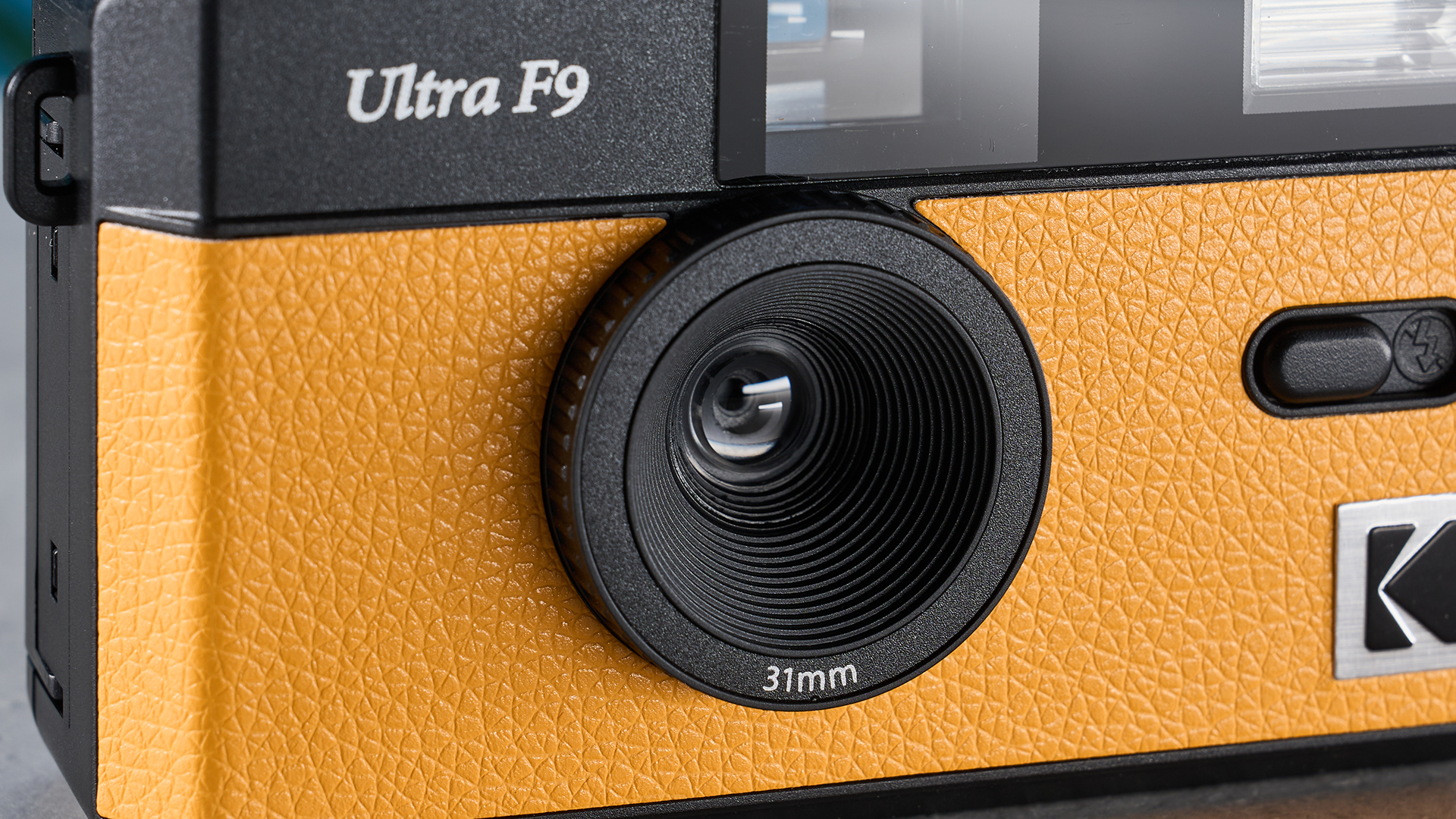
The Kodak Ultra F9 35mm is fitted with a 31mm fixed-focus optical lens with a shooting range of 1m-∞. This is a very basic, no-frills film camera, which means you don’t get much manual control over settings. Exposure is set automatically and the shutter speed is limited to 1/120s. Basically, all you need to do is look through the viewfinder and shoot. The viewfinder is a little small, however, and as someone who wears glasses all the time, I struggled to use it.
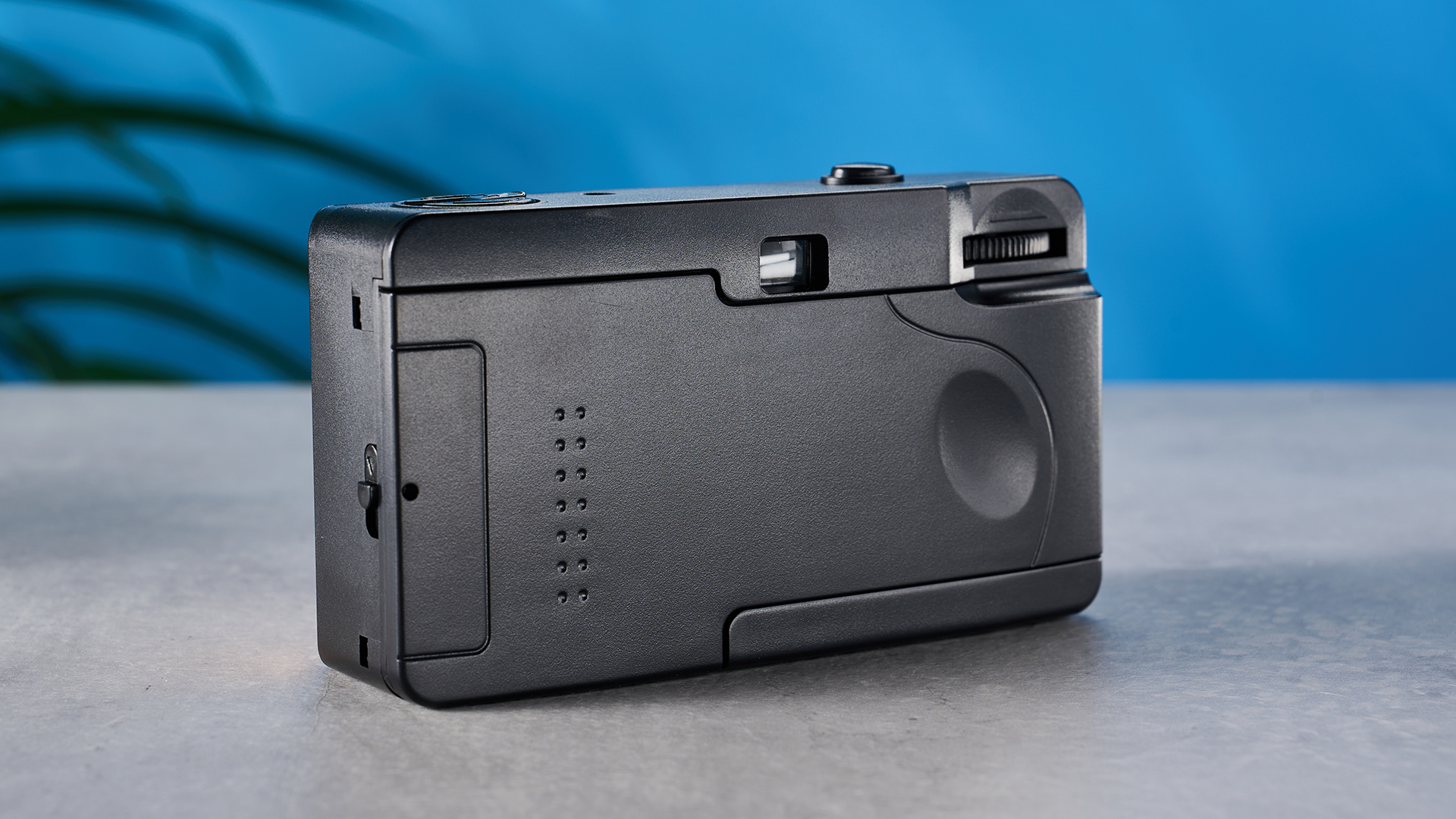
With a fixed f/9 aperture, the Ultra F9 35mm won’t perform wonders in low-light conditions as the lens aperture can’t be widened to let more light through. However, it comes with a built-in flash to aid in dimly lit environments.
Kodak Ultra F9 35mm review: Controls
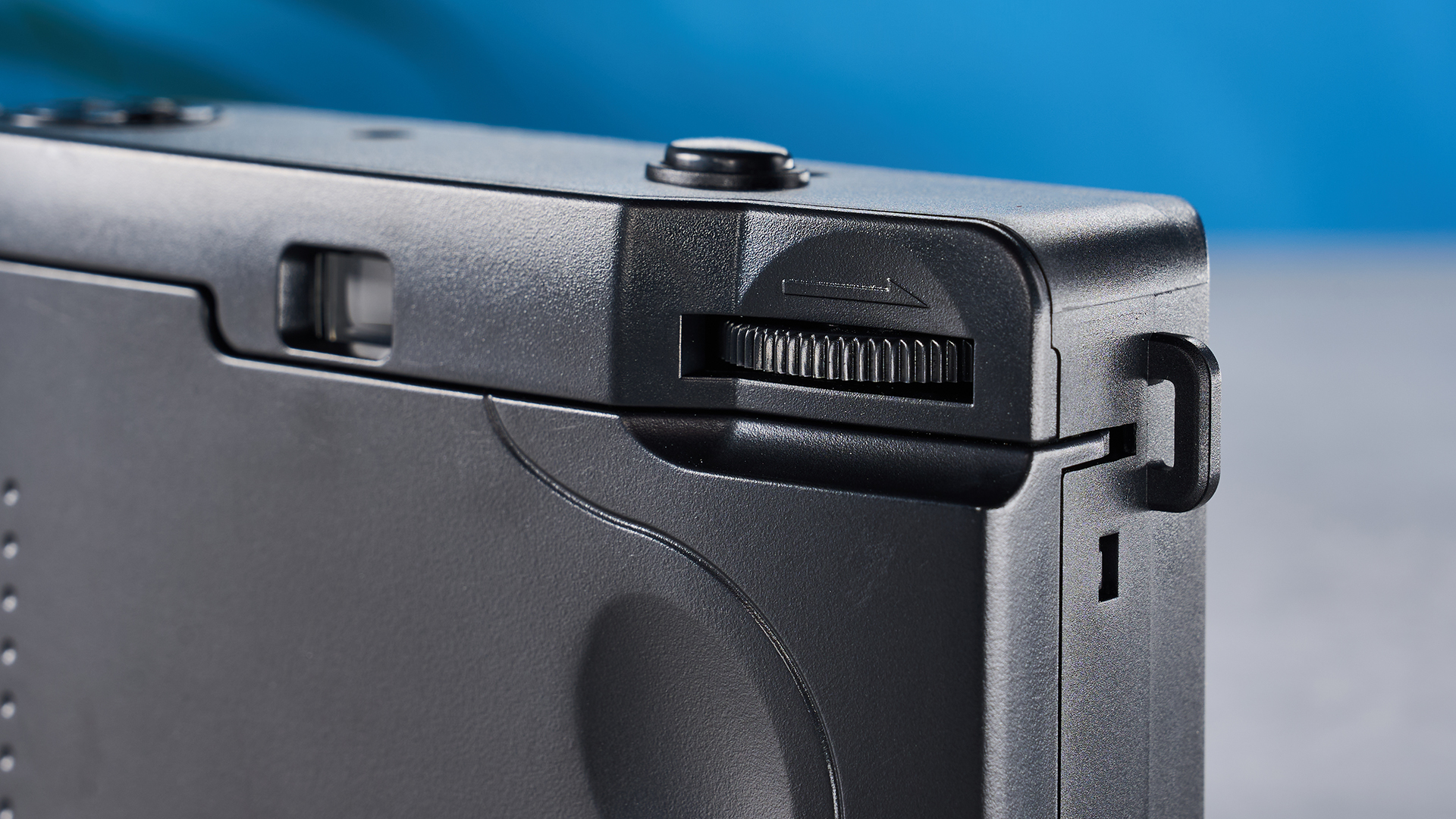
As I mentioned before, the Kodak Ultra F9 35mm is perfect for those just starting out in film photography thanks to its ease of use. The camera has a very straightforward control scheme so it won’t take you long to get used to it. On the back of the camera is where the film compartment is located. Simply pop the roll in and pull a bit of the film out, hook the sprocket holes onto the teeth, then turn the film winder until the camera takes up a bit of the film (here’s a handy tutorial in case you’re struggling). Once you’ve inserted the roll, you’re ready to start shooting.
Every time you take a shot, you’ll need to use the film winder on the back to go to the next frame before you can shoot again. This is easily done and you’ll hear a click when it’s ready.
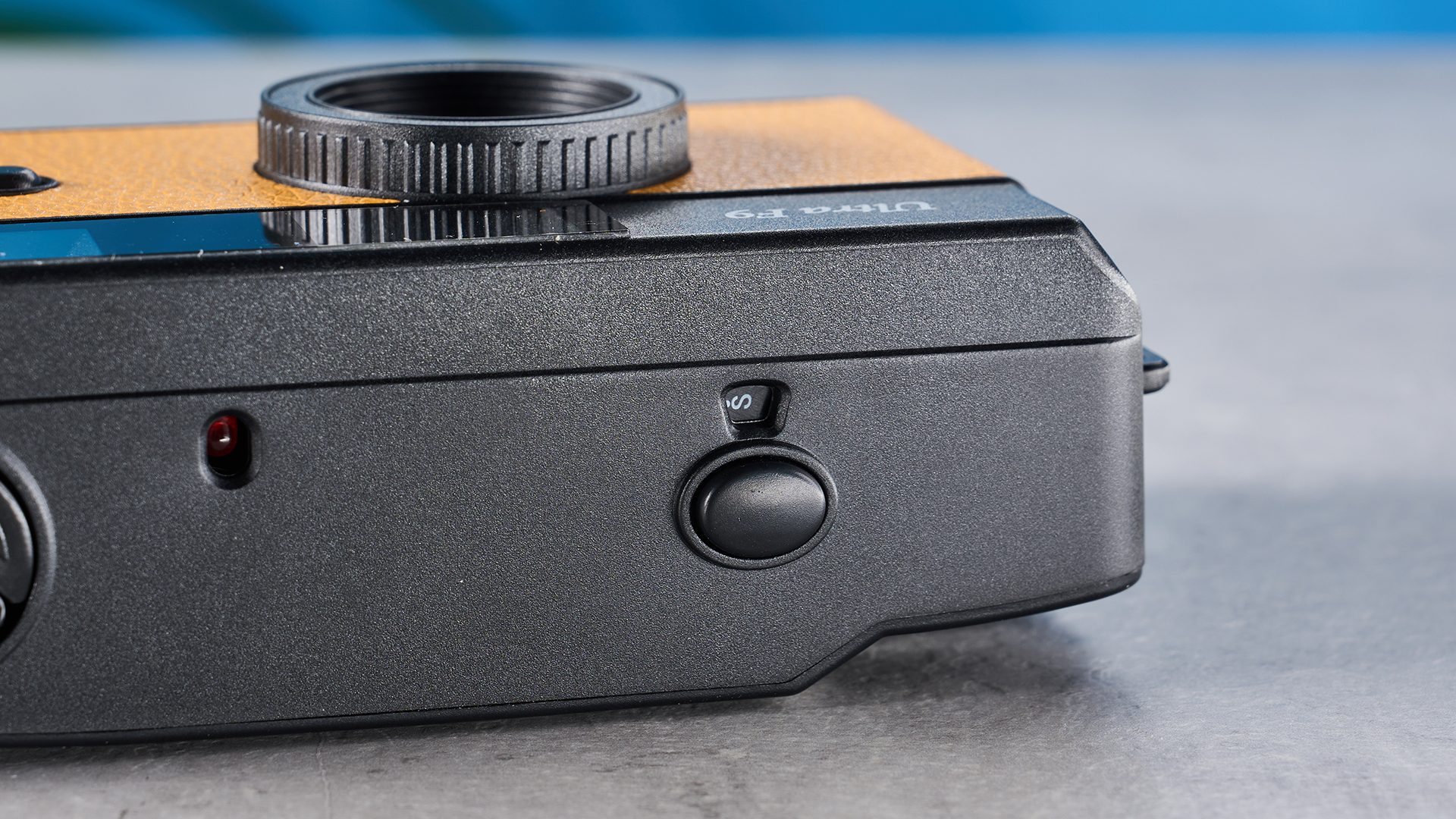
You’ll find the shutter button on the top plate, and this gives good tactile feedback when pressed. Also on the top plate is the rewind crank for loading and unloading the film.

There isn’t much else going on in terms of physical controls. There is a flash switch on the front of the camera, which you can toggle if you’re shooting in dimly lit environments. The rewind button is located on the camera’s underside and this will need to be pressed to rewind the film back into the canister when you’re ready to get it developed.
Kodak Ultra F9 35mm review: Image quality
Like with most film cameras, you can’t see the photos you’ve taken on the Kodak Ultra F9 35mm until later when you’ve developed them, but that’s the beauty of film photography. The day I handed in my roll for processing, I was eagerly waiting for the results and couldn’t stop thinking about them.

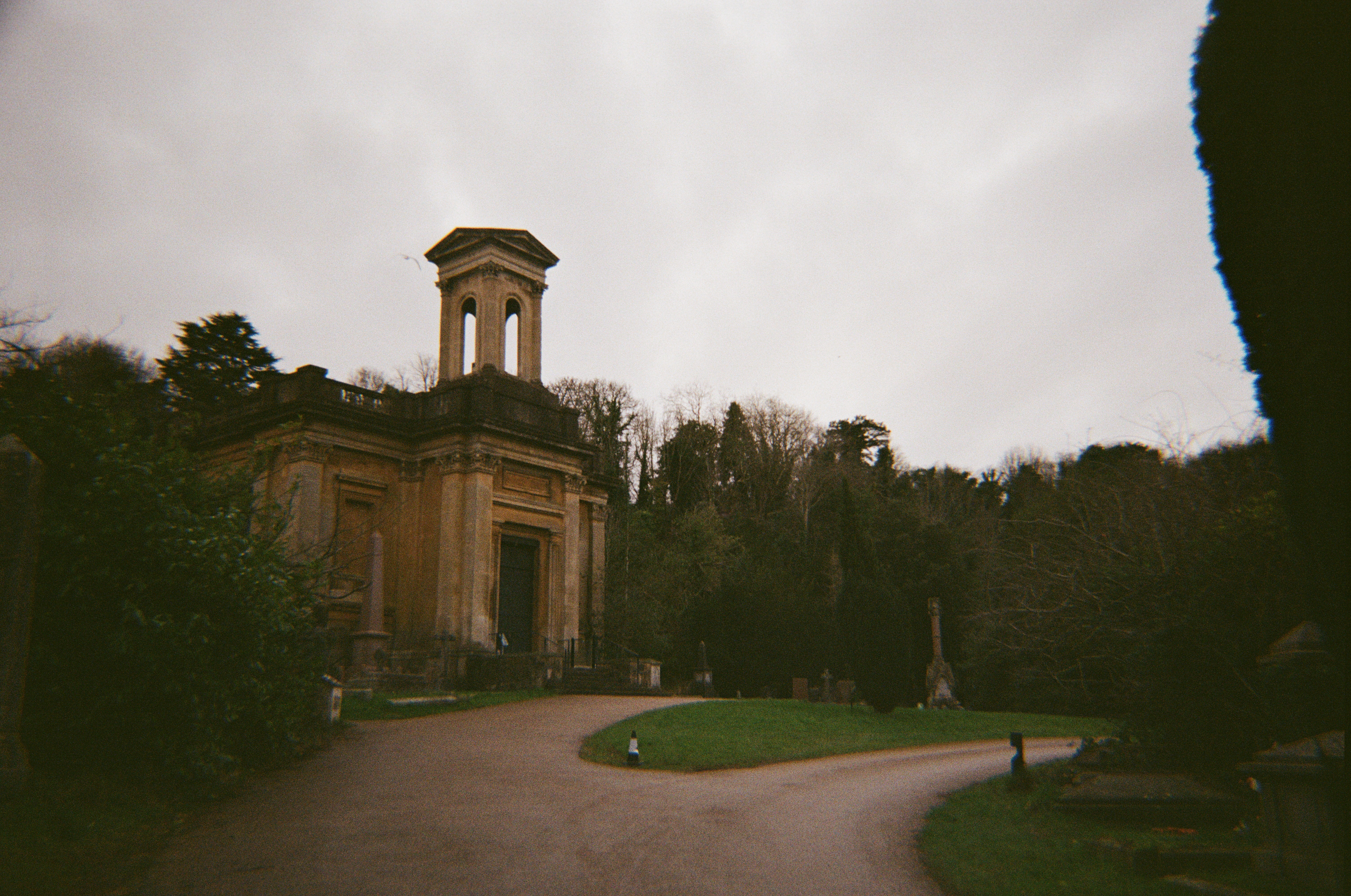
Results can be hit-or-miss and not every photo will turn out the way you envisioned, and they will also depend on the film you use. I used Kodak Gold 200 film which is rated at ISO 200, but you can also use 400 film (ISO 400). Most of the photos I took with this camera turned out fantastic, and you can see a couple of examples above. I love how faithfully the colors of the buildings and grass have been reproduced, and the photos are quite detailed too. You can clearly see the lines on the columns in the first photo, and the barren trees are clearly distinguishable in the second photo too. However, there is some color fringing, also known as chromatic aberration, in the top of the tree line in the first photo and the bush in the second photo.



The photo of the cat is perhaps my favorite. Again, it’s very detailed, with the feline’s whiskers as well as the kinks in its fur very clearly visible. It was taken on an overcast day but the Ultra F9 35mm has still done a great job of focusing on the cat. In the second photo, you can see some color fringing again, where the dark tree branches touch the light sky. The third photo of the pub was taken at dusk so while it isn’t very bright, I like that you can see the festive lights and clearly make out the pub’s name.
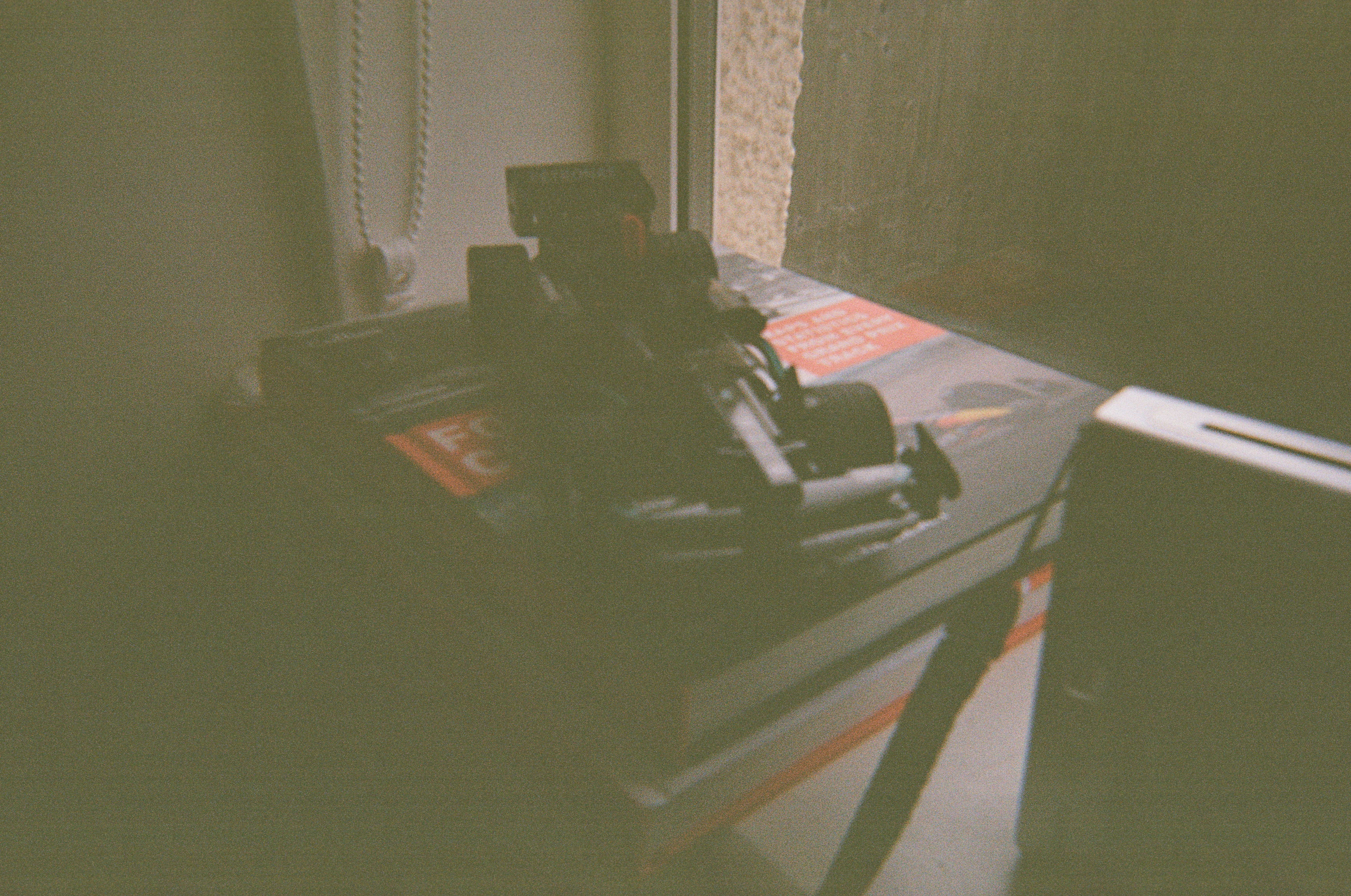
As I mentioned earlier, the Ultra F9 35mm has an f/9 aperture which isn’t great for shooting in dimly lit environments, as you can see in the photo of the Lego F1 model above. The car isn't in focus and the image is a little noisy.
Overall, though, the results are great and fit for that vintage aesthetic lots of people posting on social media look for.
Kodak Ultra F9 35mm review: Film cost & yield
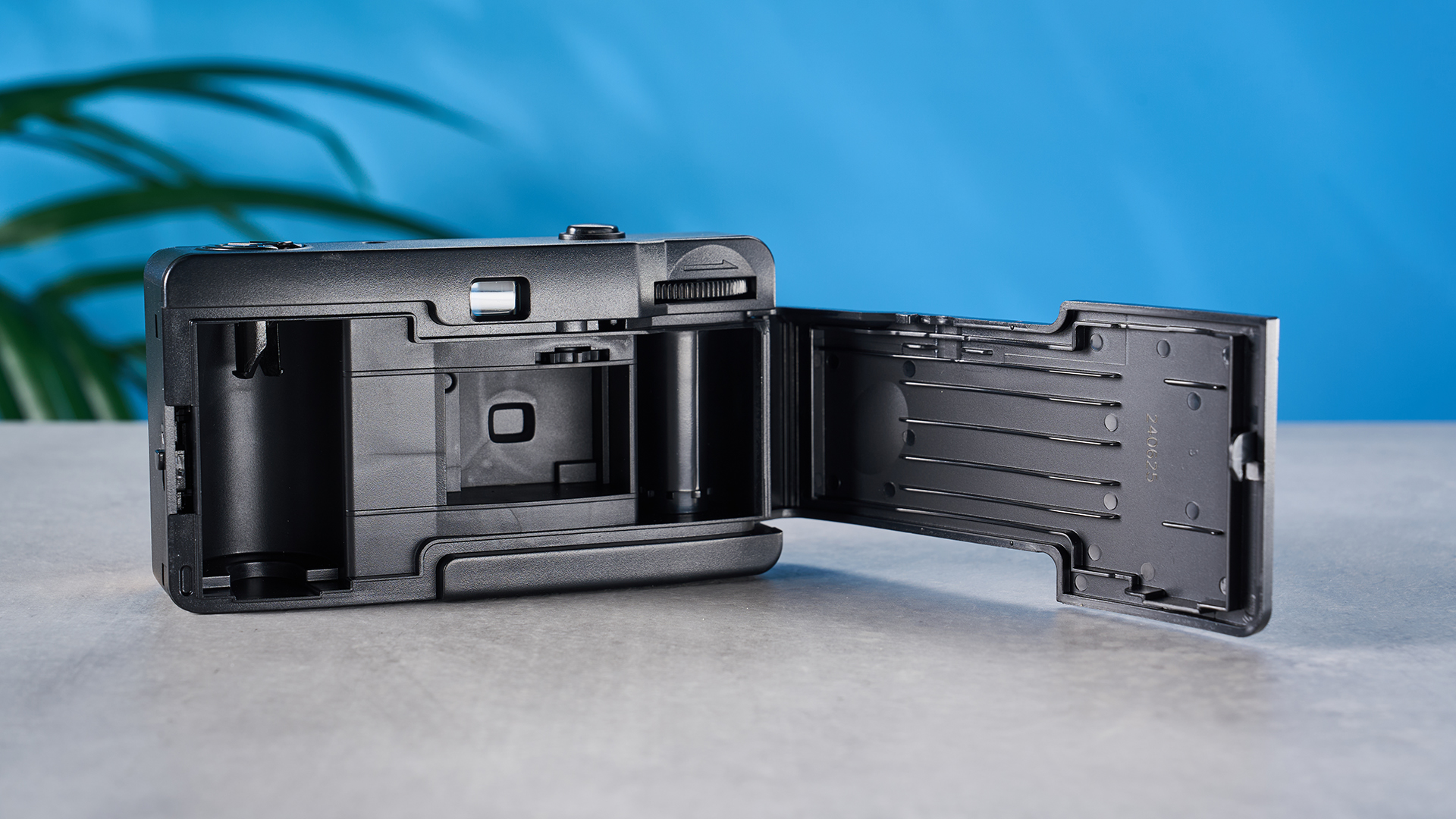
Unlike 110 film used by cameras like the Lomography Lomomatic 110 (starts at $99), 35mm is easier to procure and it isn’t very expensive either. I used Kodak Gold 200 35mm film, a roll (24 exposures) of which costs $6 / £8 on average. Developing film costs $20 / £17 on average which, in the long run, can become expensive. You could always develop film yourself which will be cheaper but that requires skill and investment.
Kodak Ultra F9 35mm review: Battery life

The Kodak Ultra F9 35mm utilizes a single AAA battery which you should be able to find at a local store easily, and chances are you probably have a couple of spares lying around your house. Disposable batteries aren’t easily recyclable so they aren’t great for the environment, but you can always use rechargeable AAA batteries instead, if that’s a concern. I used a Duracell AAA battery which lasted me an entire roll of film (24 exposures).
Kodak Ultra F9 35mm review: Verdict
I love film cameras and the Kodak Ultra F9 35mm has just earned top spot on my personal list. Thanks to an extremely straightforward control scheme, it’s very easy to use — even for those just getting started in film photography. It looks premium too, with a faux-leather-like design. The main event is, of course, the photos, and I’m pleased to report that photos taken in bright conditions look fantastic and they have a lovely retro touch to them.
It isn’t without its quirks though, as low-light performance isn’t anything to write home about, and the tiny viewfinder can be a bit of a struggle at times.
But at just $49, you really can’t go wrong with the UItra F9 35mm.

Nikita is a Staff Writer on the Reviews team at Tom's Guide. She's a lifelong gaming and photography enthusiast, always on the lookout for the latest tech. Having worked as a Sub Editor and Writer for Canon EMEA, she has interviewed photographers from all over the world and working in different genres. When she’s not working, Nikita can usually be found sinking hours into RPGs on her PS5, flying a drone (she's a licensed drone pilot), at a concert, or watching F1. Her work has appeared in several publications including Motor Sport Magazine, NME, Marriott Bonvoy, The Independent, and Metro.
